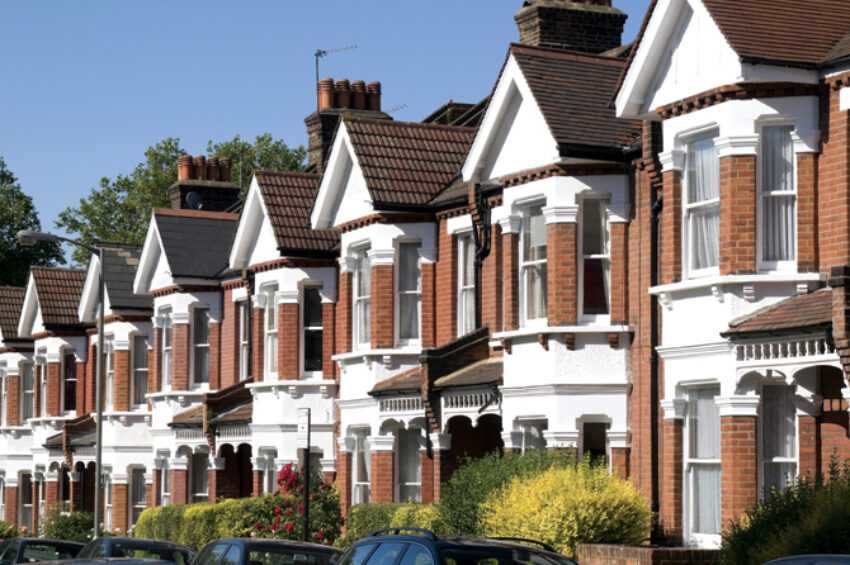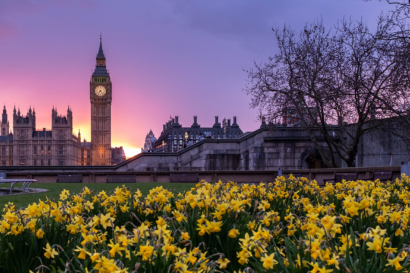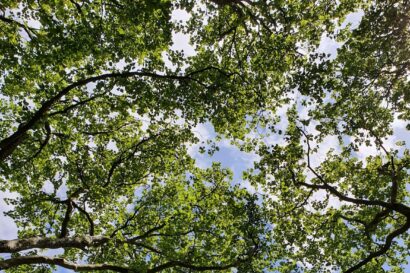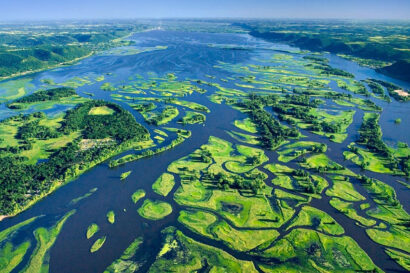AG INSIGHT | 22/05/2020
Nature offers many benefits to urban areas: COVID19 has highlighted the well-being benefits

Earthwatch researchers Beth Pudifoot and Victor Beumer explore why urban nature is so important, and why those of us who have access are lucky to during the COVID19 pandemic.
Every day for the last two months, most of us have been working from home: sitting behind our desks on laptops, we’ve had our meetings online, have had our walk to the supermarket and then sat behind our desk again. We look out of our windows and the lucky ones among us may see a tree, a lawn, some birds, or maybe even a squirrel. We realise how uplifting it will be to freely walk in the park: to enjoy the greenness, the fresh air, the different trees and bushes with birds, butterflies, and bees around us. We are in a state of lockdown within our own homes, in our own cities. And we are not the only ones. More than half of the world’s population live in cities or urbanised areas; in the UK we know 57% of people do.
This historic urban growth, people’s craving for nature, along with a changing climate demands that we fundamentally improve the relationship between cities and nature to ensure a future in which both can thrive. But, why is urban nature so important?
Urban nature can supply us with numerous services like cooling of air, water storage, improving air and water quality, offering aesthetic value, attracting diverse wildlife, facilitating education and raising awareness. All of which result in a significant range of benefits, such as: a cleaner and healthier environment, adaptation to climate change, reversing the decline of urban biodiversity, improvement of deprived areas, new socio-economic opportunities and green jobs.
The benefits of nature-based solutions
Where natural areas already exist, we need to conserve and protect them in a way that they can provide us with the benefits outlined. But more often, urban nature is manually planted or installed. In developing new urban nature, we have the opportunity to design natural solutions that optimally provide us with very specific benefits. Think of a green wall: designed for improving the air quality in areas where pollution exceeds safety levels, but it supplies other services too. These nature-based solutions (NbS) have so much value because they supply multiple services and benefits simultaneously when designed, planned and installed correctly.
Our global research on nature-based solutions
With the support of our corporate partner HSBC, we have been studying nature-based solutions in 17 major cities around the world as part of our Climate-Proof Cities programme. Through this programme we bring together researchers and policymakers to identify the impact that nature-based solutions can have on different cities.
The HSBC employees not only developed a closer link to nature, but also generated over 111,000 scientific data points globally – far more than our scientists alone could collect. Using regional teams ensured that each location developed a relevant programme for locally-specific climates and cultures, and the implementation and management of nature-based solutions relevant to each. This allowed for a wider scope of research, having six potential solutions: urban parks and green spaces, vegetated river bank, green roofs and walls, rain gardens, wetlands and bioswales, and lakes or ponds. Earthwatch scientists are now analysing this data and working to publish the findings to give planners a better chance at choosing and maintaining the best solutions for different situations.
Our innovative approach to nature-based solutions in the UK: Tiny Forests
Adding to the original six solutions identified, we have recently started research into Tiny Forests in the UK. Tiny Forests are a novel NbS, taking root across the globe. They are densely planted, diverse, native, fast growing forests that can fit on a patch of land roughly the size of a tennis court. Tiny Forests are compact enough to nestle between buildings and streets, offering an opportunity to bring nature and its numerous benefits to the urban environment. These benefits include accelerated carbon uptake, more biodiversity, increased water storage, cooler air and provide a lovely place to be.
In March, just before the COVID lockdown, Earthwatch Europe planted the UK’s first Tiny Forest with Witney Town Council, and with the help of our Dutch partner IVN. The 600 trees planted were made up of 12 native species. The 12 were selected for their compatibility with the local soil conditions, and mimicked the natural species found in the UK’s remaining patches of semi-natural ancient forest.
Essential soil preparation enables the dense planting and fast growth that characterises a Tiny Forest. By loosening soil to a meter’s depth and incorporating organic materials to improve the soil’s water holding capacity and nutrient content, rapid growth ensues. As the trees compete for available light, they can reach up to 5m in just 3 years and, by doing so, quickly start to secure carbon, provide homes for wildlife and a tranquil environment for communities, among other many other benefits.
From the outset, we plan and design Tiny Forests in collaboration with local stakeholders and the community – encouraging engagement and ownership. Planting day is a highlight, with 600 saplings to plant and 600kg of straw to lay as a protective mulch layer on top of the soil, many hands make for light work!
Once the forest is planted, a local Keeper Team of 4-5 individuals will keep an eye on the young forest. Several times a year, citizen scientists will collect scientific data which will then be analysed by Earthwatch scientists to better understand the ecosystem services provided by the Tiny Forest and add to our growing understanding of nature-based solutions. After the current lockdown is over we will be working hard to make it planting new Tiny Forests near you possible, while still following government advice around social events to ensure social distancing but maintaining the maximum benefits that the forest provides.
With the UK’s first Tiny Forest now in situ, some of the residents of Witney will at least have some natural beauty to gaze at as they look out of their own windows, while they sit behind their laptops. For this, we envy them.
Victor Beumer, Senior Research Lead, and Beth Pudifoot, Research Assistant, Earthwatch Europe.



